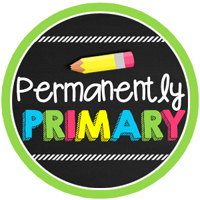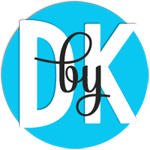No school today, which means I have a chance to catch my breath and catch up on my blog!
Data collection. I think it's one of those things that you either love or hate. I, myself, probably get entirely too giddy about it. I love seeing those graphs go up and seeing how much my students have grown. I also love the information it tells me. If you really use it as it should be used, it will honestly help you drive your instruction to best plan for your students. It's an insanely helpful tool that we really have a lot to learn from!
I always get a lot of interest and questions about the types of data I collect, what I do with it, and how I keep it organized. This blog post will hopefully answer those questions for you. If you think of other questions or want more clarification, leave a comment below and I will answer them the best I can. :)
What types of data do you collect?
Great question! There are so many things that you can collect. Some of it is useful, some of it is not. My rule of thumb is to keep it as simple as possible and to collect data on things that assess the general knowledge/abilities of your students. You can always break it down further, but that's more of what your RTI process is for. In talking about the general classroom, I collect the big things: fluency, math facts, sight words, reading levels, and scores from a 1st grade math test. I'm never big on tracking a "test", but the one we give is a test with all of the 1st grade standards that they should learn by the end of the year. We give it the first week of school, in the winter (we will be giving it the first week of February), and at the very end of the year. It shows me their mastery of 1st grade math skills. Short and simple!
That seems like a lot of paperwork. How do you keep it all organized?
Binders are my best friend! :) I keep all the info in one binder so that I have allll the data I need right at my finger tips. I put tabs in it to separate all the different categories so that it makes it easy to find what I need. I also keep my AIMSWeb reports in here.
How often do you collect data from the students?
It truly depends. I collect it often enough to see growth and be able to accurately plan for my students, but I don't do it so much that they don't have time to grow between checks. :)
For math facts, I check them weekly. We use
Gumball Math from Made for 1st Grade. I have a math fact program in my shop called
Camera Club Math Fact Mastery. Here's the
2nd grade version. They are more aligned with Common Core. :) Use whatever program you're used to using or that which works best for your needs. I keep little checksheets in my binder in sheet protectors so that I can quickly write down the date they pass each level.
As I mentioned above, we also give a general math test that checks all the standards for 1st grade. We use My Math, so we just use the end-of-year test. We give it at the beginning of the year, in the winter, and at the end of the year.
I also keep my AIMSWeb data in my binder as well. We do beginning of the year, mid-year, and end-of-year checks with those. I have a student who gets progress monitored weekly, so I will keep his information in here as well (he just started Tier 3, so I don't have his info printed yet.)
For sight words, I use
Rainbow Words from Jen Jones. My students LOVE this program! :) I assess their sight words every other week. Again, I put a checklist in a sheet protector and then write the dates of when they pass each level.
I assess fluency each week as well. We use Reading Street, so they have fluency passages included for each week. That's what I use for these and then I use the unit fluency checks at the end of each unit. I typed up checklists for each unit and placed them in sheet protectors.

For reading levels, we use Fountas & Pinnell. This year I bought a subscription to Raz-Kids, so I'm better able to monitor when they pass each level. We used to check their reading levels at the beginning of the year, mid-year, and end-of-year (and we still do), but now that I have Raz-Kids I check them more frequently. THEN when it comes time for those big checks 3x a year, it doesn't take as long because I don't have to have the read for a lot of levels! It really cuts down on the time I spend assessing those weeks. I just glance at Raz-Kids and when I see a child has passed a level on there, I check them using the books. This will be different for each student. For some I might assess them every couple of weeks, for some it will only be 3x a year if they aren't progressing through Raz-Kids. I keep a big list of the 3x a year and what level they are on, but I also keep a checklist in which I write down the date they pass each level if I assess them more often.


Do the different colors of ink you use mean anything?
Actually, they do! I'm one of those who loves colored pens. Hello
Flair Pens and
Ink Joy! A teacher's best friend. :) I color code EVERYTHING I do. So in my checklists, I use a specific color for each month so that I can easily glance and see trends or big leaps in a short amount of time. I love seasons and holidays, so of course my colors coordinate with each month. ;)
August = orange, September = red, October = orange, November = brown, December = green, January = light blue, February = pink, March = green, April = purple, May = pink
How do you store and organize all of your assessment materials?
Binders, boxes, and folders!
For Gumball Math, I found this cute flip-top box a couple years ago at Target. I put hanging folders in it and labeled them for each level. I grab my binder so I know what level they are on and pull the sheets from the box when it's time to pass them out. I call up all the kids (by name, not level) who are on the same level so that it goes a little quicker.
For Fountas & Pinnell, I have the kit that neatly stores everything. I also have purple tub where I store a binder with all the master sheets and all of the books. I just grab the tub and my binder and I have everything I need!
For Rainbow Words, I keep everything in a binder. I clip the assessment sheets to the front cover so that they are ready and I don't have to spend a ton of time looking at which level they are on, finding the corresponding sheet, writing their name, and filing them. Once they pass a level I put the sheet in their individual files. Then I just grab the next one right then and there so that it's ready for next time. I also keep a plastic pocket in the binder with the certificates to fill out and send home when they pass a level.
I keep my binder front and center! It's kept near my computer so that I can grab it at any moment, especially if an administrator or parent walks in and wants any info.
Do you display any data for your students? How do you do it?
Absolutely! I have a "data dashboard" in my room where I track class averages for the kids to see! They get so excited and amazed whenever they move up! These pictures are from a couple weeks ago. I just updated it last week with all the mid-year data and they were so excited about their gains!
For Gumball Math I also have an individual board. The kids LOVE it and then they get to take their sheet home with them at the end of the year.


I've had some people ask me, "Well what if a kid doesn't have any stickers on their gumball machine? Isn't that mean or discouraging for them? Don't other kids make fun of them?" In a short answer, it's fine. :) There are many ways to address this. You could lower their goal to ensure success for them so that they can still pass levels. Nobody else has to know if their goal is different. I've never had a child make fun of another child, but that's because we really emphasize equal vs. fair. We build up the community so much in our class that they are such big cheerleaders for each other. Those who have a limited amount are bummed if they don't pass a level, but boy you should see their faces when they finally do pass! AND you should hear the cheers from their peers when they pass! It makes me cry every time, haha. Like I said, there are many ways you can address this problem. Every classroom is different and is made up of different students. You know what works best for you and your students! And don't be afraid to try something new. You might be surprised. :)
I will actually be back on Wednesday with a little freebie to help you keep organized! ;) Next weekend I will be blogging about student data binders, so stay tuned!!! Have a great week!








































